with frame cm 113,5x84,5x3,5;
signed lower left
Exhibitions: 'Francesco Menzio' (Saluzzo, Galleria d'arte L'Archivolto, 1972)
Publications: Francesco Menzio, exhibition catalogue, Saluzzo, Galleria d'arte L'Archivolto, 1972
Provenance: Saluzzo, Galleria d'arte L'Archivolto
Turin, private collection
Born in Tempio Pausania, Sardinia, Menzio moved to Turin in 1912 where he attended the Accademia Albertina from which he was soon expelled, continuing on a self-taught path that led him to look closely at Felice Casorati's lesson, without ever becoming his pupil.
His early exhibition debut dates back to 1921 with the 'dissidents' exhibition of the Promotrice delle Belle Arti held at the Mole Antonelliana.
In 1924, he was among the Twenty Italian Artists exhibited at the Galleria Pesaro in Milan, an exhibition that saw some of the later protagonists of the Novecento and the Gruppo dei Sei in Turin come together. Invited by Margherita Sarfatti to exhibit at the first exhibition of the Novecento Italiano in 1926, he joined the group, participating in 1927 in the Novecento group shows in Zurich and Geneva.
Between 1927 and 1930 he frequently stayed in Paris where he had the opportunity to get to know directly the work of the Impressionists and Post-Impressionists, in particular the Fauves and Cézanne, whose lesson led him towards more fluid and free expressive formulas, far from the classicism and robust plasticism of Casorati's first lesson.
1929 was the year of the establishment of the Group of Six (Boswell, Chessa, Galante, Levi, Menzio, Paulucci), promoted by the critic Edoardo Persico. The brief experience (1929-31) of the Six of Turin was part of the various reactions to the Novecento Italiano group and its classicist and archaicising mandates, in many cases declined according to the self-celebratory needs of the regime's rhetoric.
In opposition to these principles, the six young Turin artists turned to an art of international scope with an eye for the French tradition and Impressionist models, brought as examples of freedom of visual sensation against the classical fixity of the Novecento.
The 1930s and 1940s, which marked the painter's full expressive and creative maturity, saw Menzio resolve his personal artistic making in a solitary and autonomous manner and, deaf to the flattery of power, he would always refuse any invitation to join fascism, characterising himself as a painter without compromise.
In 1942, Menzio was displaced from Turin and took refuge in Bossolasco, land of the Langhe, with his wife Ottavia and children. The same year saw him win, ahead of Guttuso of the famous Crucifixion, the 4th Bergamo Prize, where, with the painting The Family in the Countryside, a scene with intimate and colloquial tones, he took a path that was certainly opposed to the regime's celebrations but at the same time an alternative to the more drastic and expressionistic compositional and chromatic deformations proposed by Guttuso. Menzio's art thus marks a decisive contribution to the renewal of Italian figuration, a figuration that is certainly not avant-garde and ideological but aimed at and aimed at the reconstruction of an intimist and lyrical vision of the everyday.
In the post-war period Menzio was a frequent presence at the most important national art events and his participation in the Venice Biennials was constant until 1958. From 1951 he held the Chair of Painting at the Turin Academy and in the 1950s he worked as a fresco painter alongside Casorati for the decoration of the Stories of Saint Catherine (San Domenico, Cagliari) and for the Aula Magna of the University of Genoa.
Menzio's poetics is resolved in a few constantly frequented themes: portraits and still lifes composed of a few selected everyday objects: vases, fruit baskets, dried leaves and flowers, plaster busts, often accompanied by the presence of a mirror.
Still characteristic of Menzio's work are the landscapes and the views of the Po River and the Piedmont hills stand out, visions often constructed as glimpses taken from a window, a sign that those places are but an extreme offshoot, an external continuation of the painter's inner world, of his physical space, the studio, which concludes and guards the even more secret and intimate one of the soul.
Good state of preservation
For further information please contact us




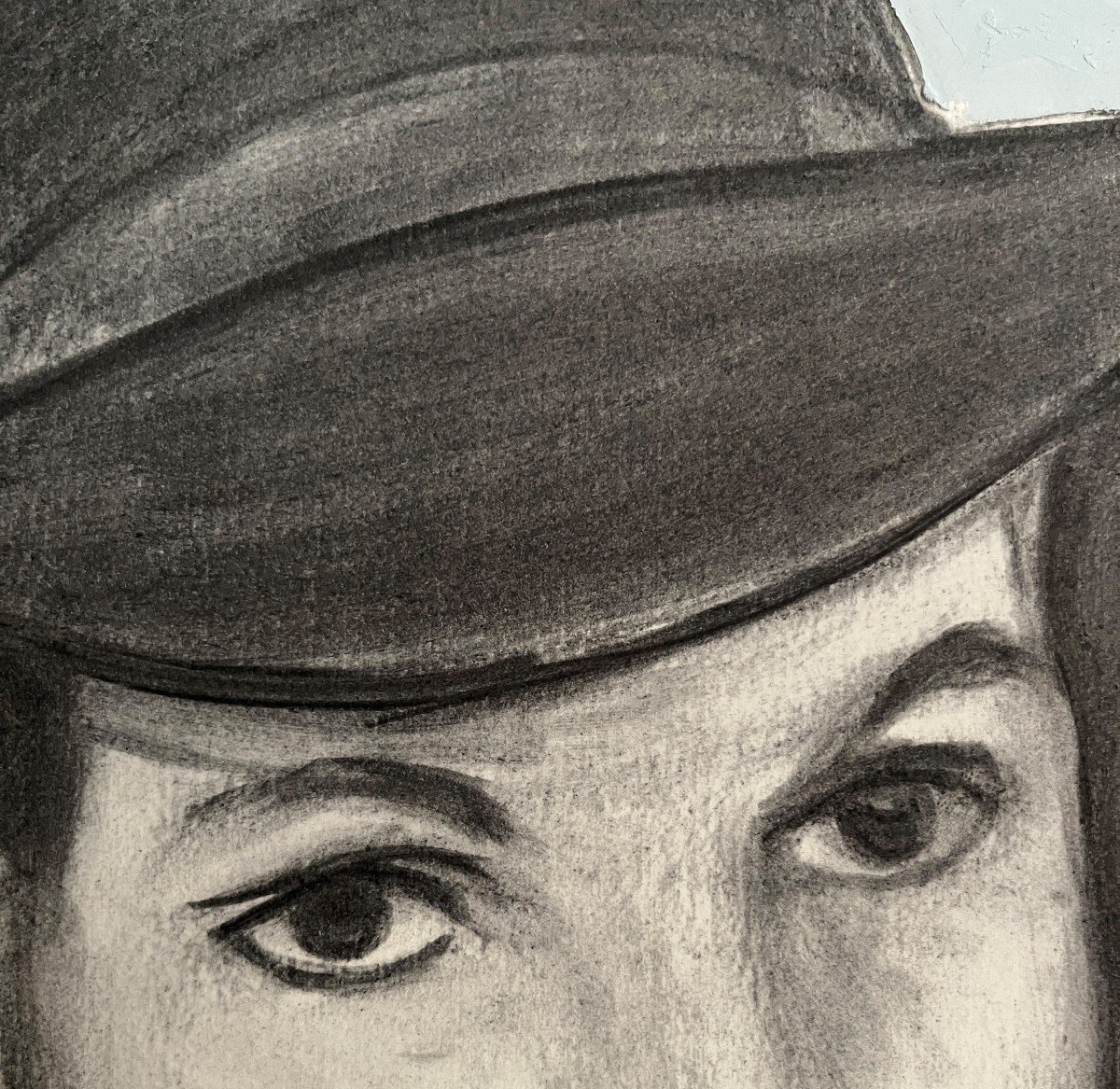






















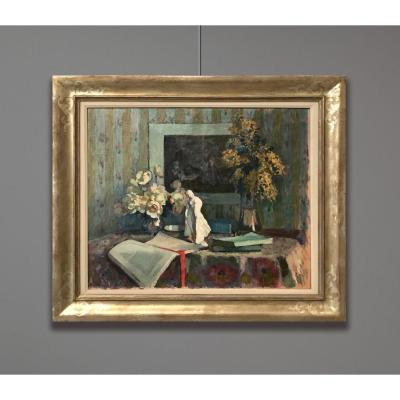
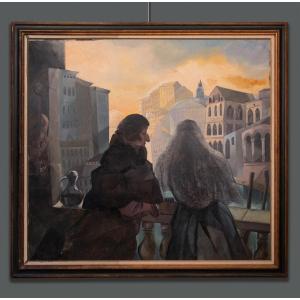

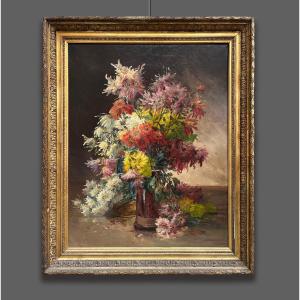

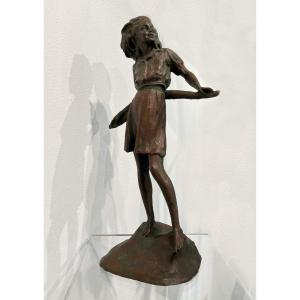
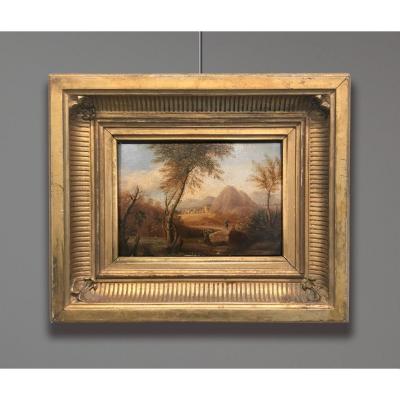



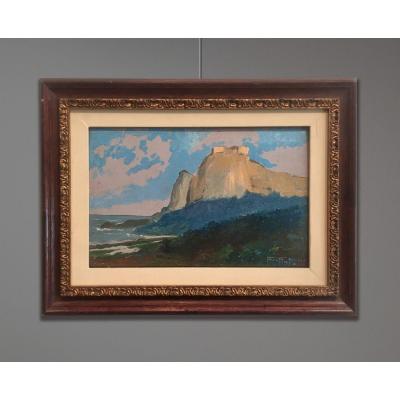



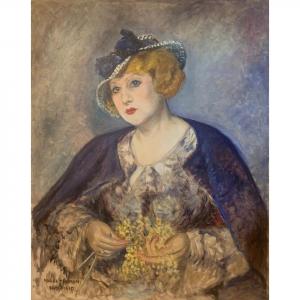

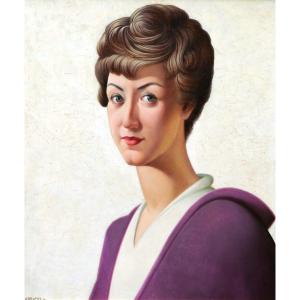



 Le Magazine de PROANTIC
Le Magazine de PROANTIC TRÉSORS Magazine
TRÉSORS Magazine Rivista Artiquariato
Rivista Artiquariato